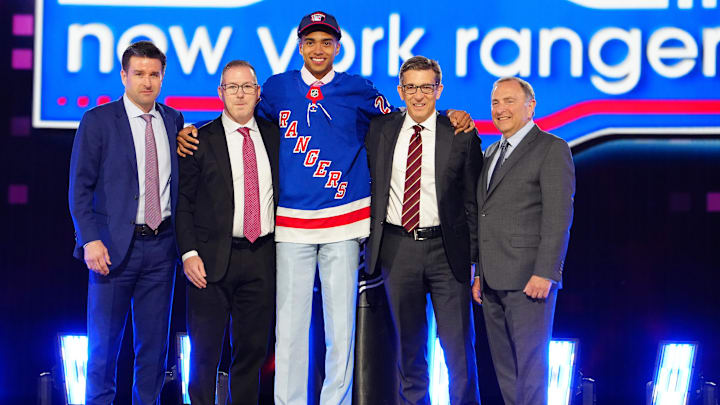The Ever Changing Trends of the NHL Draft

The trends of the NHL are always changing. When the Pittsburgh Penguins won back-to-back Stanley Cups in 2016 and 2017, they had a team built on speed and forechecking, and that trend caught fire. Teams began mimicking that type of roster construction. Recently, the trend has gone back towards supplementing that speed with size and physicality. It's a constantly changing flow of ideas and methods of execution.
That is well exemplified in the NHL Draft process as well. Over the last decade, the types of players teams are prioritizing is a back and forth pull that's hard to grasp. Recently, Nick Ashbourne of RG.org put together a comprehensive overview of draft classes by height and weight over the past two decades.
One of the biggest takeaways was how teams evaluate size, referring to both height and weight, of the prospects they draft. Ashbourne broke down the drafts into five year groups to produce averages to compare, and it paints an erratic picture.
Between the 2005 and 2009 drafts, the average weight of a first-round selection was 73.5 inches tall and 198 pounds, right around what today's NHL team's average weight is.
But in the 15 years since, there is a noticeable drop in the average weight and height of the first-round class. The past two drafts alone have produced more first-round players under 5'10 than all drafts between 2010 and 2019 combined.
"Since 2020, 11 players listed 5'10 or under on draft day were selected in the top-16 of their respective drafts," Ashbourne wrote. "With the 2022 and 2023 NHL Drafts each seeing four players 5'10 and under selected in that range. That number of shorter prospects matches all 10 drafts between 2010 and 2019."
It makes sense that the league is putting more trust into smaller players, as the NHL has watched more and more succeed in today's style of hockey. You don't have to be over 6'0 tall and over 200 pounds to withstand the physicality of the NHL game. Does it help? Sure, but it's not a requirement.
Ask superstars in the NHL today like Connor Bedard, Brayden Point, Brad Marchand, Alex DeBrincat, Cole Caufield and Mats Zuccarello, just to name a few. And watching those players not only survive, but succeed and thrive, is giving teams continued hope that they will find that next undersized, yet over-skilled player.
"The NHL is becoming more open and offensive," Ashbourne asserts. "And the natural reaction is to pick the most skilled players available, even if they are smaller."
Ashbourne also makes sure to posit that while there is a trend emerging, the desire for the "prototypical" NHL player never dies. It's why in every draft class, there is a player with outstanding size taken and the organization does so with the hope that skills like skating and offensive IQ will develop over time. Because you know what they say, you can't teach size.
The Boston Bruins just selected a 6'7 center in the first round of the 2024 NHL Draft. He won't be in the NHL for several years at least, but the potential is what the Bruins are buying in on. It's a perfect example of Ashbourne's point: no matter the trends, NHL teams still covet size and skill.
"That doesn't mean bigger players will be phased out of the game," Ashbourne said. "If they skate, there will be a place for them. The league recognizes that impactful talent comes in all shapes and sizes."
Which is why the NHL Draft is such a volatile place to look for statistical consistency. It's an event filled with wonderful surprises, frustrating disappointments, illogical choice and ever changing trends.
